Jules Basement
Drawing designers and creatives alike, a new intimate bar illuminates Mexico City
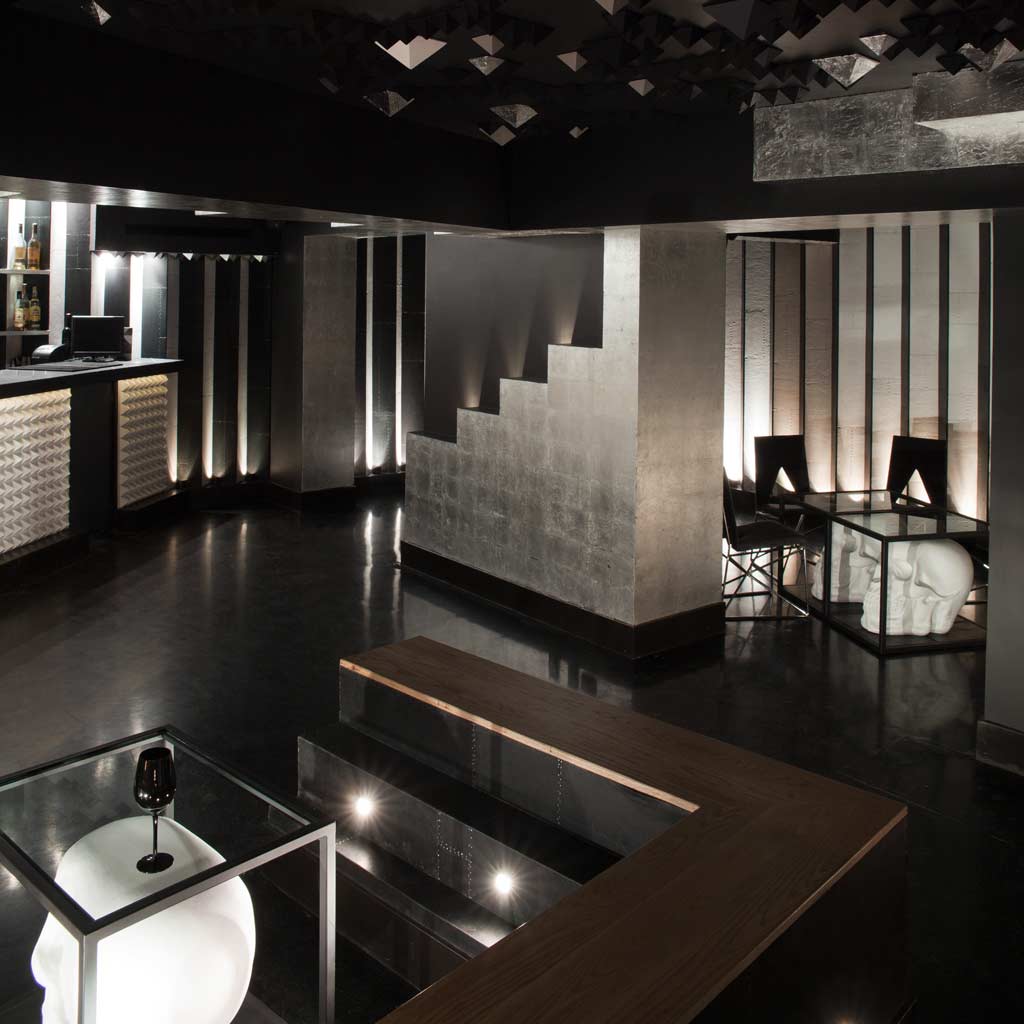
by Carissa Wodehouse
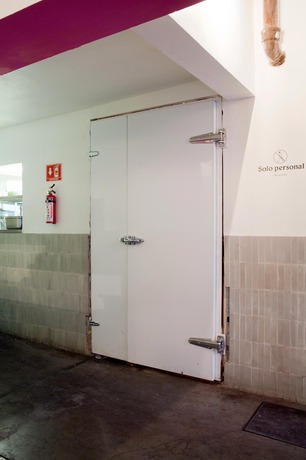
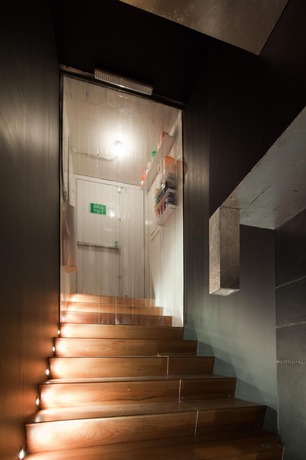
Though Mexico City is known for its size, a growing local creative class and influx of world travelers are carving out first-rate gathering spots in its nooks and crannies. Jules Basement, a speakeasy tucked under an unassuming taco restaurant in the high-end Polanco neighborhood, feels like an appropriate place for these conversations. Mexican designers, artists, and foodies are turning traditional creations, such as mezcal, into world class products. Increasingly, the world is not just listening to Mexico, but talking back.
To get to Jules Basement, knowing which restaurant to enter is only the beginning. Next, visitors need to get through the doorman outside, who upon checking the list will let approved visitors through an industrial cooler door and a set of rubber curtains—a process Gerardo Salgado, co-owner with Olivia Villanti and Guillaume Guevara, admits pokes a little fun at the red velvet ropes and valet-parked BMWs more common to the area. It also taps into why Mexico City is so exhilirating, by confirming the feeling that something amazing is right under your nose.

At the bottom of the stairs, visitors are welcomed into the catacomb-like space by large white skulls encased in glass. These are cocktail tables, custom-designed along with the rest of the space by French interior designer Emmanuel Picault and French architect Ludwig Godefroy, both long-time Mexico City residents. On the ceiling dozens of tiny pyramids mounted like stalagtites reference the spikes on the Mayan tree of life and emphasize the feeling of being underground. “It’s death overlooking life,” says Salgado, explaining that while the skulls shock tourists, they are nothing to Mexicans.
Salgado points out the repeating stair theme, which integrates the spacial restrictions of the basement by cutting jagged sections across the low ceiling. Every inch of wall is covered in hand-nailed black leather panels, including an accordian-style back wall which alternates between white and black leather. The bar itself is a white column of pyramids, glittering with cut crystal bottles of dark infusions.
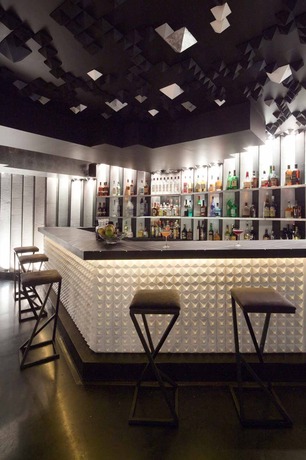
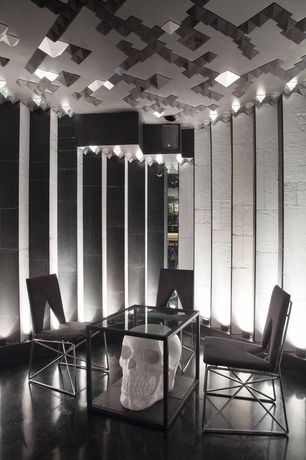
You’ll find a kind of familiarity in the cocktails, crafted by Seattle-based mixologist Jay Kuehner. Mezcal Negroni takes Hemingway’s favorite cocktail and replaces gin with white mezcal infused with Chile de Arbol and served with a cinnamon stick. More negroni ages in barrels behind the bar. The cocktail smells like Christmas and tastes like an exotic cousin of the average Negroni. “Mexicans are very thirsty for new things,” says Salgado, noting the cocktails are as much for locals as tourists. At seven months old, Jules is also a place for well-traveled Mexicans to interchange ideas with visitors from other world cities.
Mexico City is great for taking something you thought you knew and throwing a splash of color on it. The names of the drinks are a hint at what’s to come: La Primera Palabra (The First Word), Flor de Sangre (Blood Flower), or the Guatemala “Sazerac” which uses Peychaud’s bitters the owners bring in from the US. The two main mezcals used are Mezcal Semillero, whose owner is a partner in the bar, and San Cosme, a product from Loop Tonic, the marketing group behind the bar.

The experience is very intimate, from the entrance down to the cut glass tumblers, which give the feeling of drinking in your wealthy grandparents’ house. “We’re not at the door selecting people who can come in, it’s more if you know about it, you go,” says Salgado. This is one of a growing group of design scene hangouts that are just as nice as the big clubs, for a rising creative class who want to go out together. On Tuesdays, a live jazz band draws a crowd of artists and couples for a Tanqueray-themed cocktail night. For those hesitant to try mezcal, the bar serves a very good classic gin martini.
Jules keeps less than a dozen tables, and seats just over 50. Emerging from the belly of the beast, visitors find themselves in El Montruo (The Monster), one of the city’s nicknames, albeit a few blocks down from shops such as Louis Vutton and Cartier. After the cloistered experience of Jules, it takes a moment to adjust to the scrambling valets and street vendors hawking iPhone covers in one of the largest cities in the world.
Also on offer at the bar are artisinal Mexican beers, Champagne, and traditional cocktails. A charcuterie menu is available, or taco-style food can be brought down from the restaurant above. Visitors can get themselves on the list by staying at certain boutique hotels and having their concierge call, or there’s always Twitter, a highly effective mode of communication in Mexico. For more information on location, hours and offerings, visit the website.












